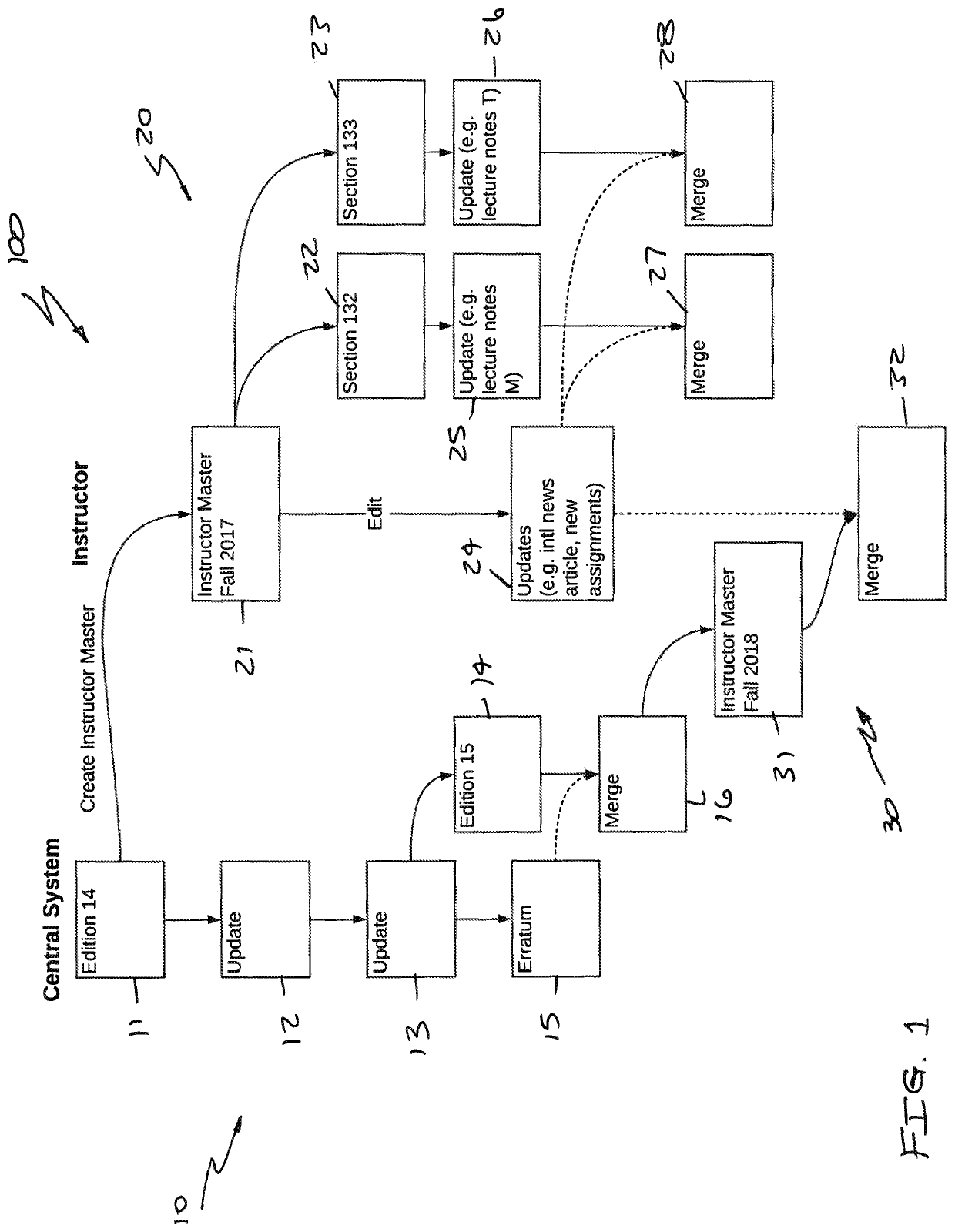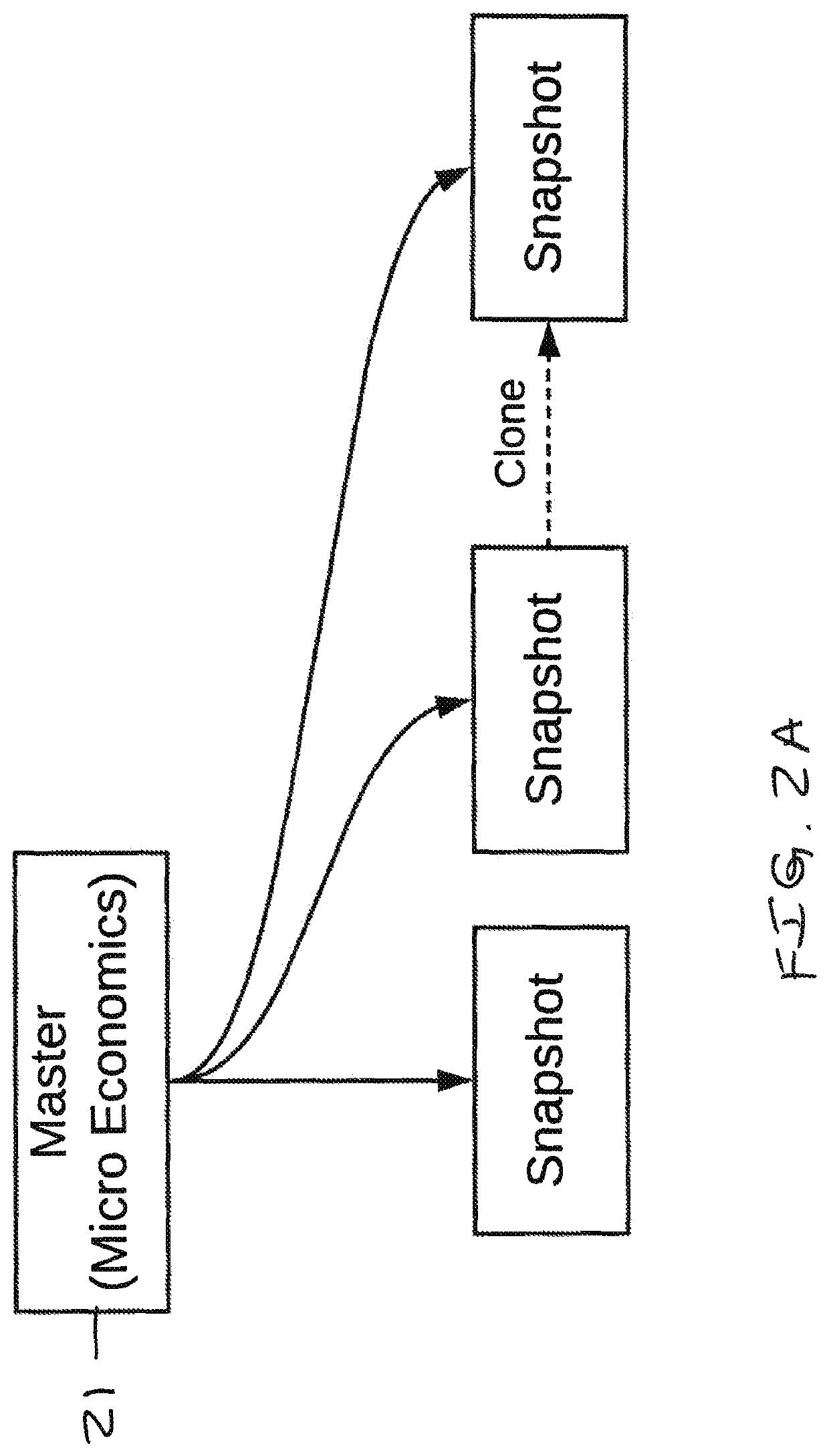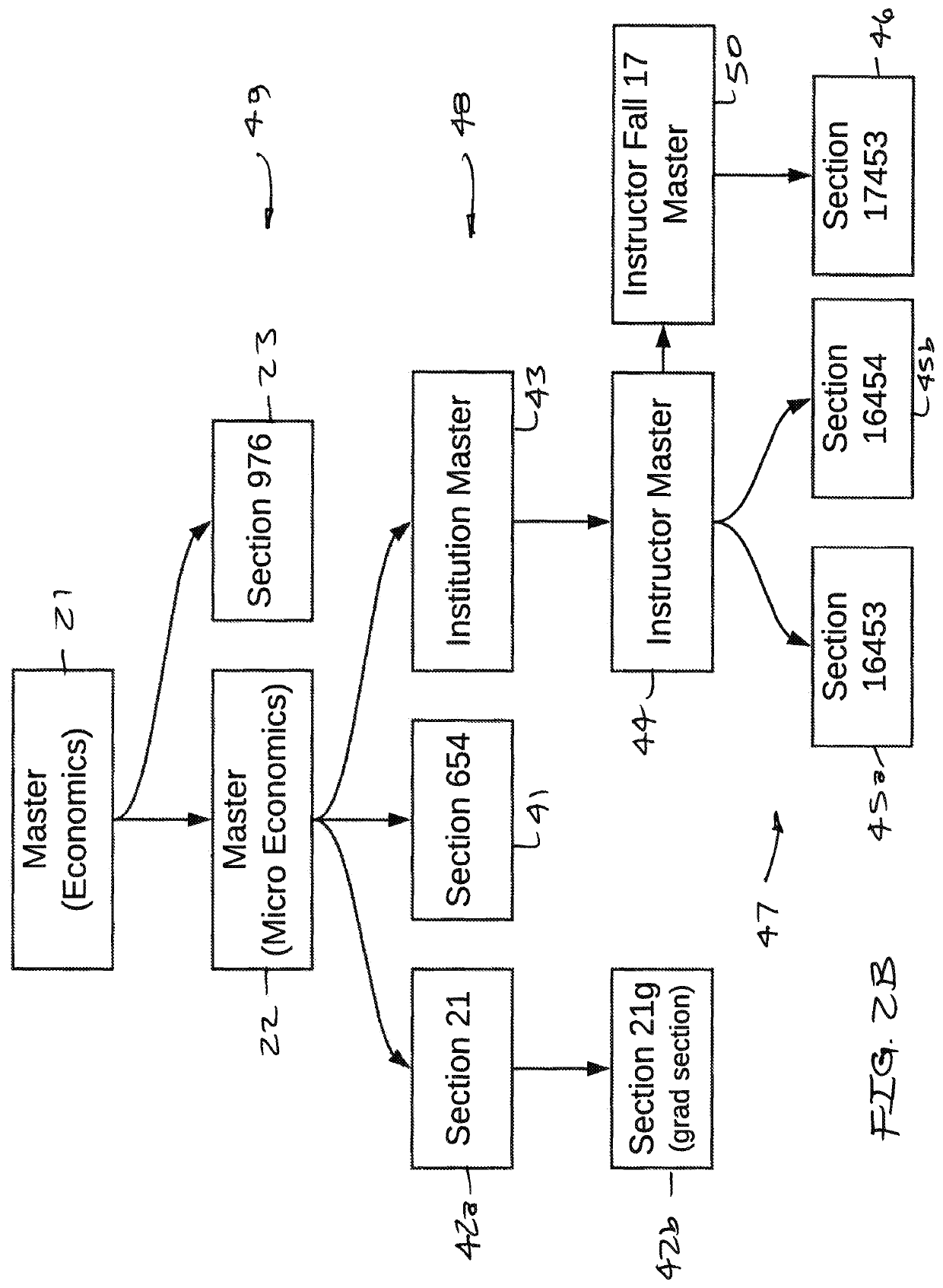Systems and methods for producing incremental revised content
a technology of incremental revision and content, applied in the field of methods and systems for providing digital derivatives of instructional materials, can solve the problems of increasing difficulty in supplemental materials like presentations, videos, and difficult updating instructional materials, and achieves richer, smoother and more accurate process
- Summary
- Abstract
- Description
- Claims
- Application Information
AI Technical Summary
Benefits of technology
Problems solved by technology
Method used
Image
Examples
Embodiment Construction
[0027]Referring to FIG. 1, an environment 100 (e.g., a logic flow) for producing a complex derivative work 30 that may be periodically and in some cases continuously-updated by multiple contributor parties (e.g., authors, publishers, editors, professors, and the like) to include changes, errata, problem sets, and the like from multiple sources 10, 20 is shown. In some applications, the environment 100 may include a central content and version control system 10 that provides editing and publishing functions for a population of authors, as well as a remote version control system 20 that provides updates, problems sets, quizzes, tests, presentations, and the like that may be created by the users (e.g., professors) of the work. Whereas the former system 10 may update and enhance the derivative work 30 for all actual or potential users, the latter system 20 may customize and enhance the publisher's products independent of other users. This may be referred to as branching of the content: ...
PUM
 Login to View More
Login to View More Abstract
Description
Claims
Application Information
 Login to View More
Login to View More - R&D
- Intellectual Property
- Life Sciences
- Materials
- Tech Scout
- Unparalleled Data Quality
- Higher Quality Content
- 60% Fewer Hallucinations
Browse by: Latest US Patents, China's latest patents, Technical Efficacy Thesaurus, Application Domain, Technology Topic, Popular Technical Reports.
© 2025 PatSnap. All rights reserved.Legal|Privacy policy|Modern Slavery Act Transparency Statement|Sitemap|About US| Contact US: help@patsnap.com



